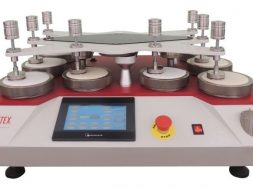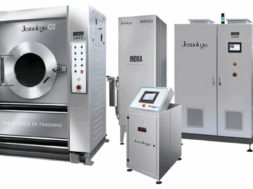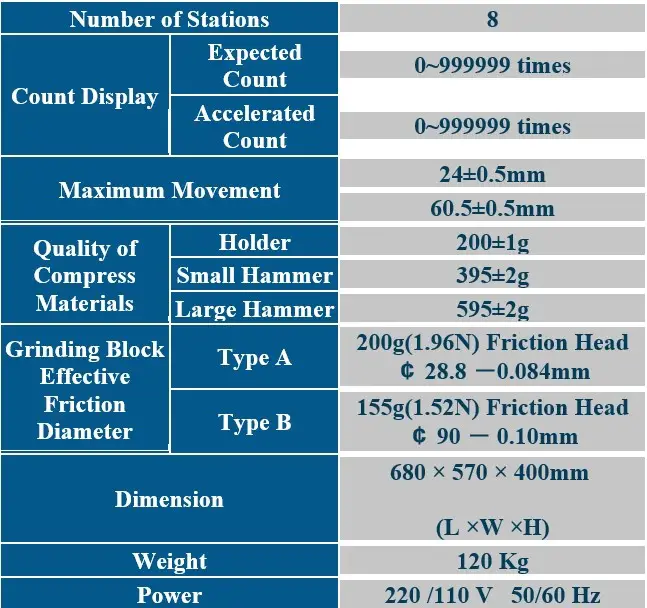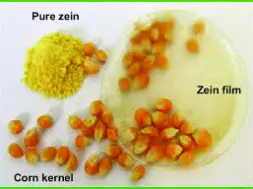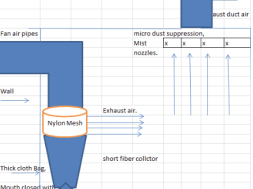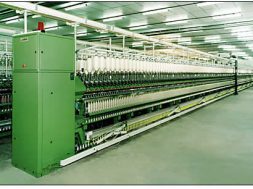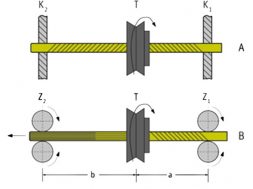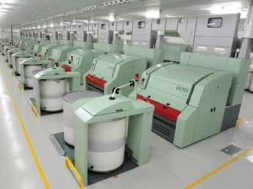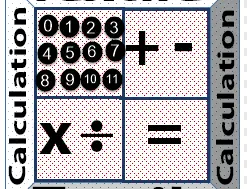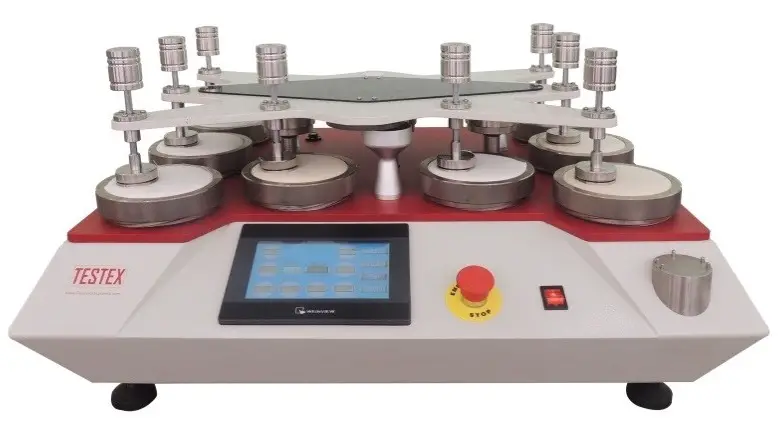
Martindale Pilling And Abrasion Test
2.92K
0
Martindale Pilling And Abrasion Test
Abrasion : Abrasion is one aspect of wear and is the rubbing away of the component fibers and yarns of the fabric.
Abrasion may be classified as follows-
- Plane or flat abrasion-A flat area of material is abraded.
- Edge abrasion-This kind of abrasion occurs at collars and folds.
- Flex abrasion-In this case, rubbing is accompanied by flexing and bending.
Abrasion Resistance : The resistance power against damage due to abrasion of a fabric known as abrasion resistance.
Martindale pilling and abrasion tester
Figure: Martindale pilling and abrasion tester
Martindale Abrasion Tester Parameters :
The Principle Of Testing :
Circle samples are grazed by fabrics with compatible material considering the recommended pressure in the trajectory of Lissajous movement, to accomplish certain turns and calculate the tested samples degree of pilling. Figure 2 below is frequently used though there are four types of Lissajous-figure.
Figure1: lissajous  Figure2: lissajous
Figure2: lissajous
Procedure For Testing :
- For 8 hours the tested sample should be kept in the laboratory surrounding.
- Get a sample from the compressed section of the tested sample (it should be detached to the transfer site if it turns out to be a shoe pad.
- Take out the load and make sure the shaft of the machine is loaded
- Take out the test fixture and the uppermost plate.
- Device for specimen: untighten the fixing ring found on the test fixture, the press tablet sample should be taken off, the test fixture base is where the sample will be placed, between the specimen and the test fixture base a gasket should also be placed. fixed with the ring is a press sample placed on the sample gasket.
- Friction cloth device and wool felt: untighten the fixing ring around the fixing screw, put the friction cloth on the placed wool felt on the base, in the middle of the friction clothe is where the 2.5 kg pressure should be placed, tighten back the lock fixed screw and fixed ring.
- The load shaft (12KPA) should be placed through the uppermost flat hole, the uppermost plate should also be fixed back.
- Test fixture face while a sample is down, it should be placed on the base fixture, so that the shaft load is properly inserted into the circular groove of the test fixture the load shaft must be adjusted against the circular groove of the test fixture.
- Following the official set times, start testing after pushing the switch, shut down should be automatic when acquiring the pre-set times.
Video :
Precautions During A Test :
- To determine (times of rub) check intervals, it is meant to prevent fabrics grazing more than pre-set times.in testing abrasion, worn out of samples should be prevented, or else grazing times won’t be accounted for. When checking the apparent differences, determining the check intervals is to prevent missing graze times that is seen on the sample surface
- Loosen conditions of the samples tested are to be left in a polished, airy plane of acceptable atmosphere for 18 hours at least. when samples are to be taken, there should be at least a distance of 100 mm from the cloth, enough samples should be taken (3 pieces at least) from the samples in the laboratory, also gather all information concerning fabrics.
Precautions During Operations :
- Immediately after a test the friction clothe should be replaced because it cannot be used several times.
- Wool felt can only be replaced if the surface is stained or worn out.
- During the Martindale abrasion test the pad of the shoe should be removed with the clothing.
- Abnormal conditions on sample surface such as broken yarn, serious wear or serious pilling, fluff etc. make the tested samples to be judged as defective after each testing.
- Try and pay extra attention to prevent fluff during the cutting of edges to prevent mass loss and difference in appearance.
- Ensure to consider personal safety and operation during the apparatus operation process.
(2924)
